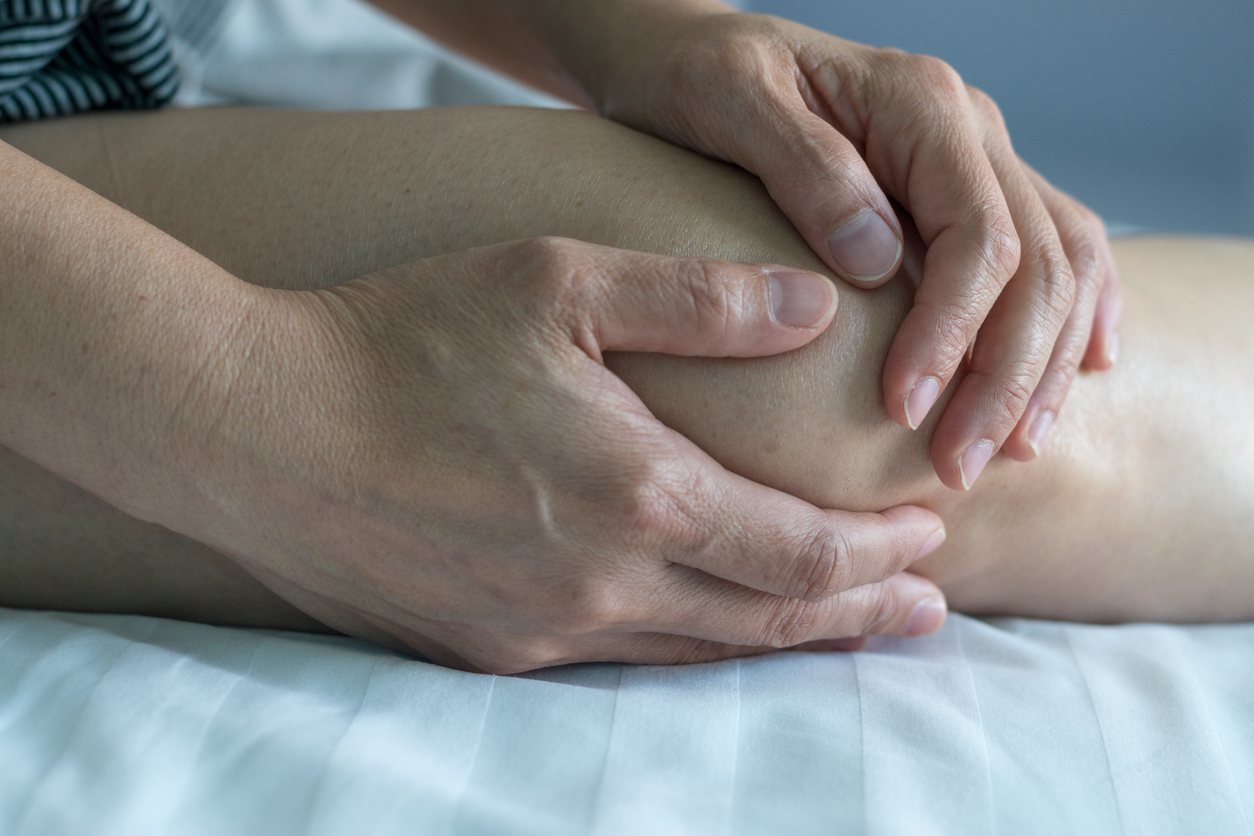
While not as common as its close relative (arthritis), bursitis can also affect the knee and other major joints in the body and produce symptoms that can be just as debilitating.
The condition occurs when one or more of the small fluid-filled sacs (bursae)— which cushion the gliding surfaces of the structures (bones, muscles, and tendons) surrounding your joints and allow for frictionless movement— get inflamed. When bursitis affects your knee, it can cause pain, tenderness, warmth, and swelling in the affected area of the joint. The pain can worsen when you flex your knee and can also be accompanied by stiffness.
The symptoms of knee bursitis can overlap those of arthritis, so it is imperative that you see an orthopedic doctor for an accurate diagnosis and appropriate treatment. Your orthopedic doctor will carry out a comprehensive evaluation to confirm bursitis and which type you have (i.e., aseptic or septic). From there, your doctor will determine the suitable treatment for you, depending on the type of bursitis you have as well as the severity thereof. Your knee bursitis treatment plan will likely consist of any of the following modalities.
Anti-Inflammatories
Your doctor will likely prescribe oral anti-inflammatories to alleviate the swelling and improve the function of your knee.
If your symptoms are not adequately relieved with oral pain medications, your doctor may give you a cortisone shot, which they will administer into or around the affected area. Cortisone shots generally work quickly. In many causes, one shot is enough to soothe the inflammation.
Your knee doctor may recommend that you use an assistive device (e.g., cane or crutch), along with medications, to help keep the pressure off your knee.
Aspiration
Aspiration involves your knee doctor removing excess fluid from your swollen bursa/e using a needle and a syringe. The procedure is typically carried out under local anesthesia using ultrasound guidance, for both diagnostic and therapeutic purposes.
Antibiotics
If you have septic bursitis, your orthopedic doctor will administer prompt and aggressive treatment to reduce your risk for arthritis. Your orthopedic doctor will give you antibiotics either orally or intravenously and, possibly, carry out repeated aspiration to ensure the infected fluid is completely drained from your bursa.
Physical Therapy
Your orthopedic doctor may also recommend physical therapy in conjunction with any of the modalities mentioned in this list. Physical therapy has been shown to provide significant symptom relief for patients with knee bursitis as well as help them restore their joint’s normal function and range of motion.
Surgery
If your symptoms continue unabated despite conservative interventions, your doctor will likely perform surgery to remove the inflamed or infected bursa.
Bursitis Knee Treatment in Bismarck, ND
For top-notch care for knee bursitis, visit The Bone & Joint Center. Our board-certified orthopedic experts offer an extensive range of innovative and evidenced-based solutions for the gamut of musculoskeletal problems—including arthritis and bursitis—all aimed at helping patients feel better and move freely again.
If you would like to schedule a visit with one of our bone and joint experts, call (800) 424-2663 today. You may also fill out our appointment request form, and our staff member will get back to you promptly to confirm your schedule.

